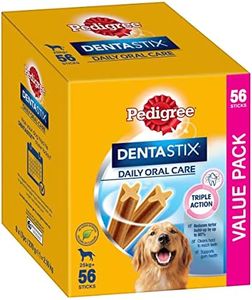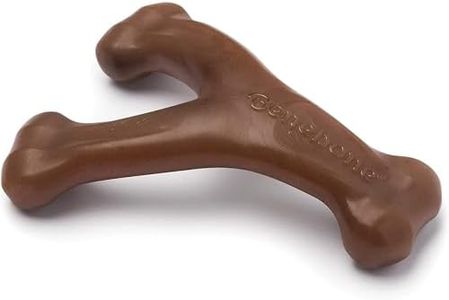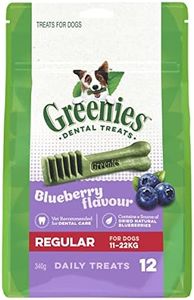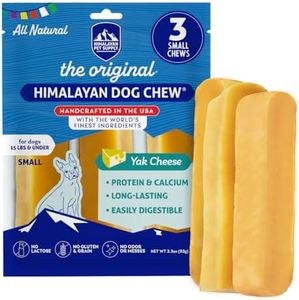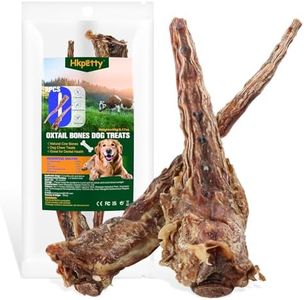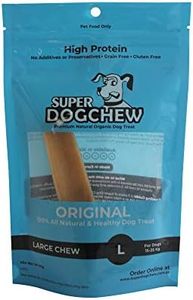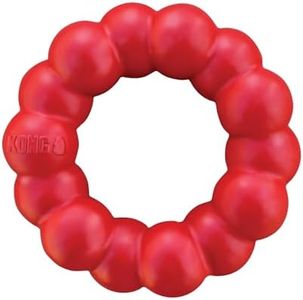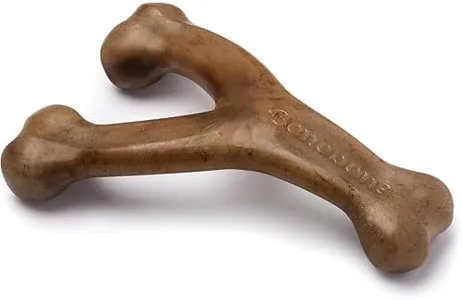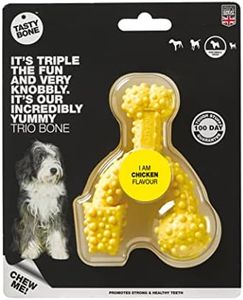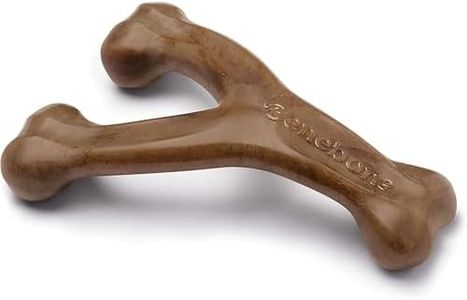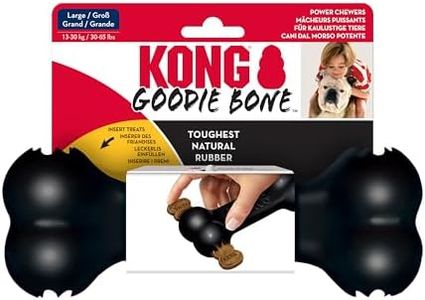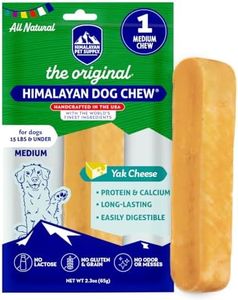We Use CookiesWe use cookies to enhance the security, performance,
functionality and for analytical and promotional activities. By continuing to browse this site you
are agreeing to our privacy policy
10 Best Dog Chew Bones
From leading brands and best sellers available on the web.By clicking on a link to a third party's website, log data is shared with that third party.
Buying Guide for the Best Dog Chew Bones
Choosing the best dog chew bones is an important decision to keep your dog healthy, happy, and entertained. The right chew bone can help with dental hygiene, reduce boredom, minimize destructive behavior, and provide a long-lasting treat. However, not every chew bone fits all dogs—factors like your dog's size, chewing strength, age, and any allergies or sensitivities play a big role. Understanding key features will help you select the most suitable option tailored to your dog's unique needs.MaterialThe material of a dog chew bone refers to what it's made of, such as natural animal bones, rawhide, nylon, rubber, or edible ingredients. This is important because different materials suit different types of chewers and offer varying levels of safety and durability. For gentle chewers or puppies, softer materials like rubber or specially-formulated edible chews are often better, while tough chewers may benefit from harder nylon or natural bones designed to last longer. If your dog has allergies or a sensitive stomach, you should stick to products without certain animal proteins or artificial ingredients.
SizeSize refers to how big or small the chew bone is, and this matters greatly to prevent choking and ensure safety. Chew bones usually come in sizes ranging from small (for toy breeds and puppies) to large (for bigger dogs). A bone that is too small may be swallowed and cause a blockage, while one too large could be hard for your dog to enjoy. Choose a size that matches your dog's mouth and jaw strength: as a rule, the bone should be larger than your dog's mouth yet still easy to hold.
Chew StrengthChew strength indicates how durable and tough the chew bone is, which is important for matching your dog's chewing habits. Light or moderate chewers may be content with softer chews, while aggressive chewers need stronger, more durable bones that won't break apart quickly or create sharp fragments. Check packaging or product descriptions that indicate whether the bone is meant for gentle, moderate, or strong chewers, and use your knowledge of your dog's habits as a guide.
EdibilityEdibility differentiates between bones meant to be eaten and those designed just for chewing. Edible bones can double as snacks or meal supplements, often made of digestible ingredients, while inedible chews are typically more durable and long-lasting. If your goal is dental cleaning and lasting entertainment, an inedible chew may be ideal. If you're using the bone as a treat or reward, look for something fully edible and easily digestible.
Flavor and ScentFlavor and scent refer to added tastes and aromas, which can make the chew bones more enticing for dogs. Common options include chicken, beef, bacon, or natural flavors. These can be an important motivator, especially for picky eaters or as a training reward. However, if your dog has food sensitivities or allergies, stick to limited or hypoallergenic flavors.
Dental BenefitsDental benefits indicate whether the chew bone is designed to help clean teeth, massage gums, or reduce plaque and tartar buildup. This is especially important if you want to support your dog's oral health. Some chews are textured or infused with dental-cleaning ingredients. Consider your dog's age and dental health when choosing—older dogs or those with dental issues may need softer chews, while healthy adults can use more abrasive, cleaning-focused options.
